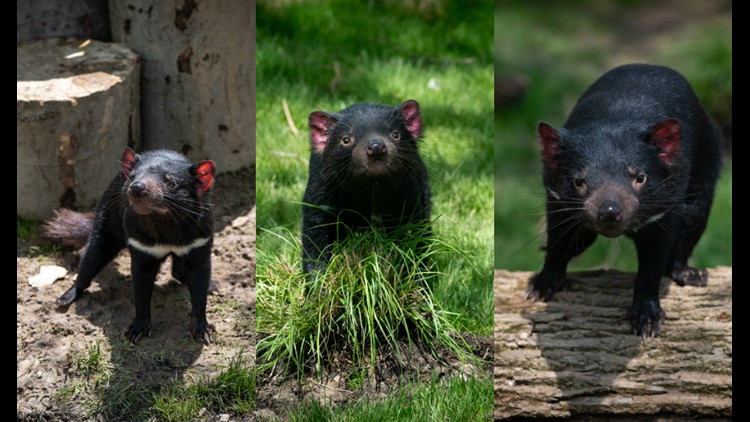The Columbus Zoo and Aquarium is welcoming three Tasmanian devils for the first time in more than 20 years.
One-year-old Tasmanian devils, Sprout, Thyme and Mustard arrived in Columbus late Thursday evening from Tasmania.
Columbus is now one of only seven zoos in North America to house the species.
The trio are still in arrival quarantine and will transition to their habitat in the zoo’s Australia and the Islands region.
A regular schedule for public viewing has not yet been set.
Tasmanian devils are the world’s largest carnivorous marsupial and live from the coastal plains to the mountains of Tasmania, an island state of Australia.
The Tasmanian devils were brought to Columbus through the Save the Tasmanian Devil Program. The program is the official response by the Tasmanian government to the threat of extinction due to Devil Facial Tumour Disease.
The disease is a fatal condition in Tasmanian devils characterized by the appearance of obvious facial tumors and is highly contagious among their populations.
“The Tasmanian devils are an exciting addition to our Columbus Zoo family and play an incredibly important role as ambassadors for their species,” said Columbus Zoo President and CEO Tom Stalf. “It is a privilege to be able to work with the Save the Tasmanian Devil Program and continue to expand our impact internationally by contributing to the conservation of this species while also raising awareness within our own community about these animals and how we can help them.”
"The Save the Tasmanian Devil Program is proud to welcome the Columbus Zoo and Aquarium as a partner in the conservation of our iconic species,” said David Schaap, the Save the Tasmanian Devil Program’s Tasmanian Devil Ambassador Program Coordinator. “Through the Tasmanian Devil Ambassador Program, we recognize the enormous impact that the Columbus Zoo can achieve with education on the plight of Tasmanian devils as well as the contributions already made towards the safe-guarding of the species in the wild. Modern zoos are now centers of excellence in conservation and the Columbus Zoo demonstrates this in all of their actions."



